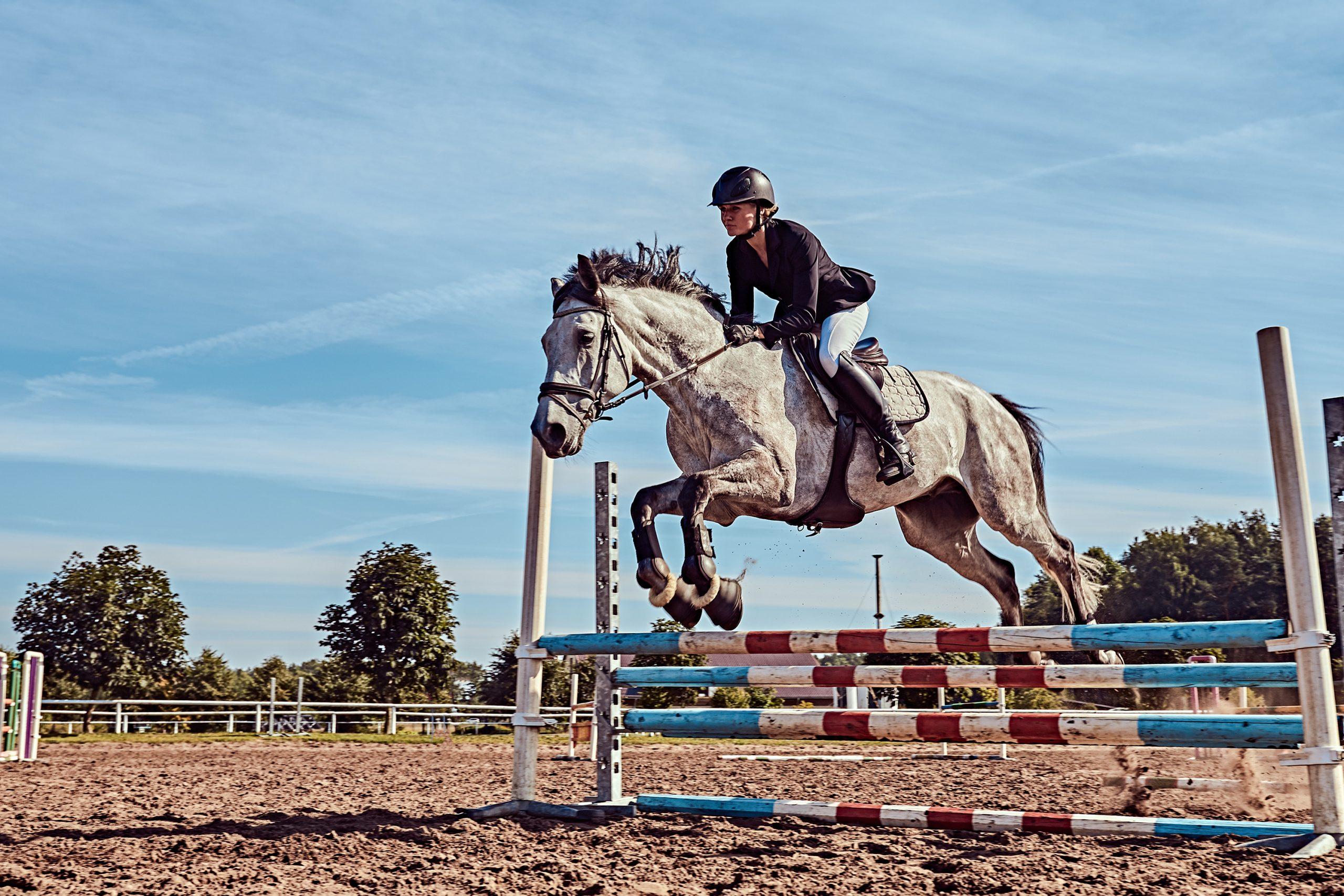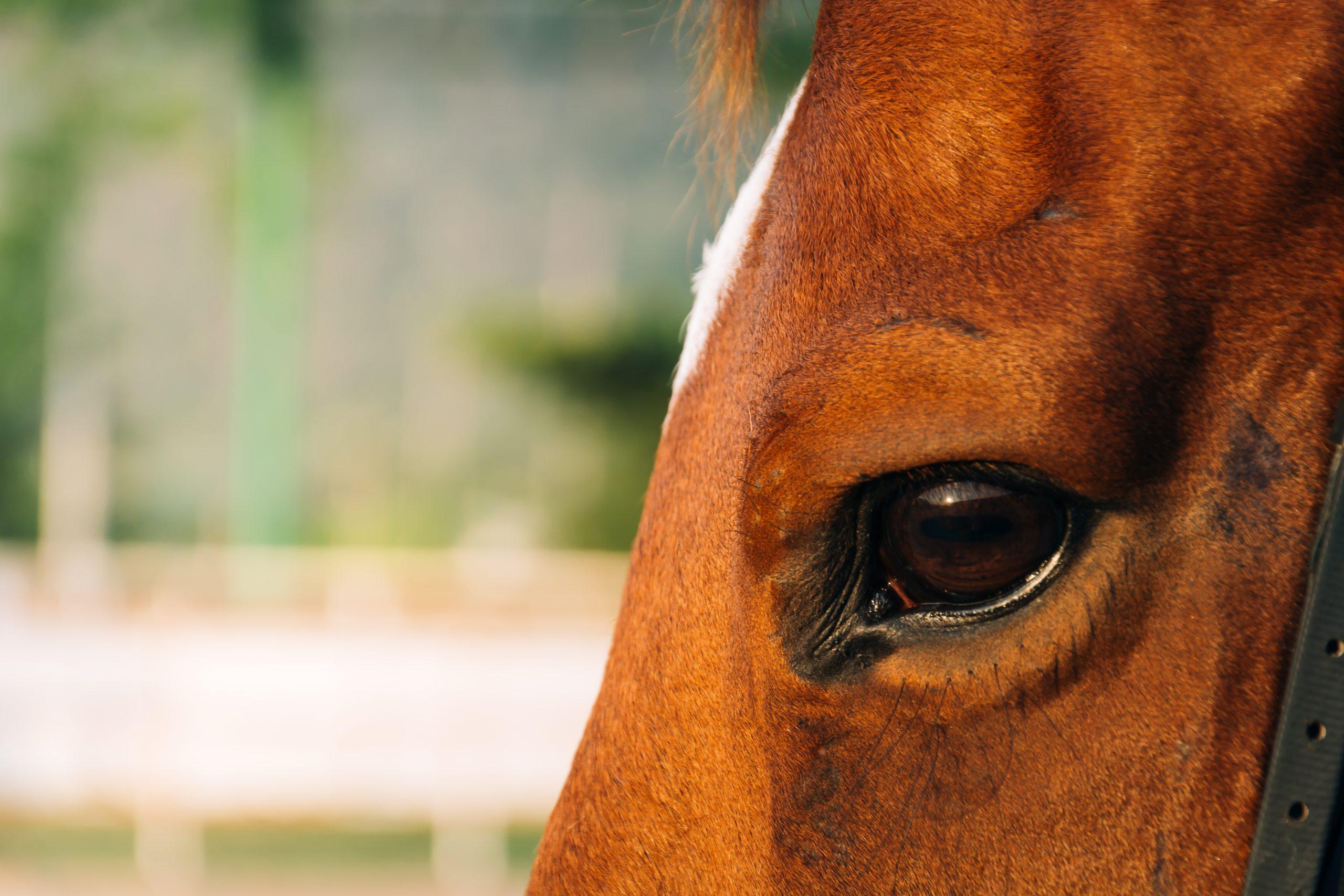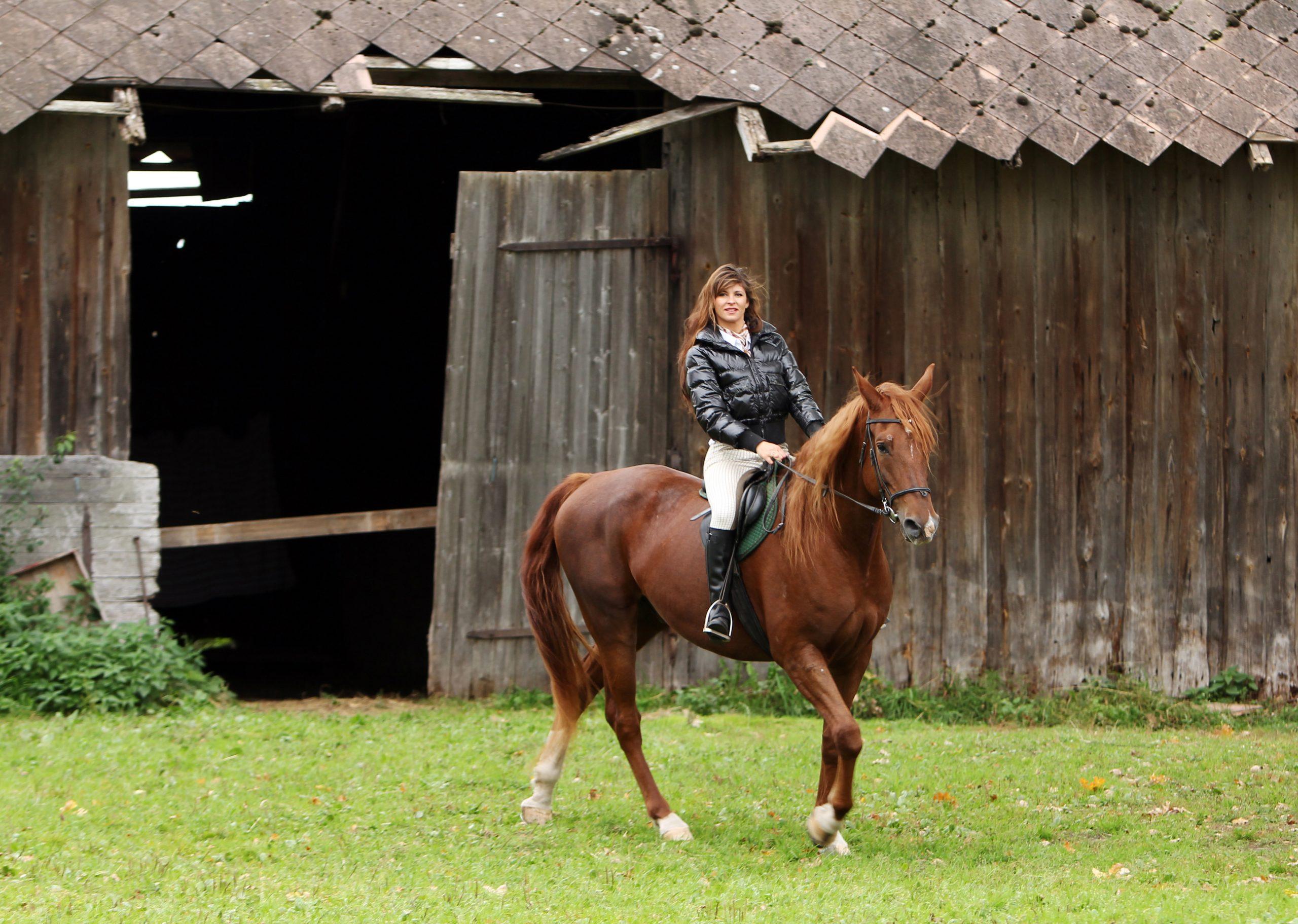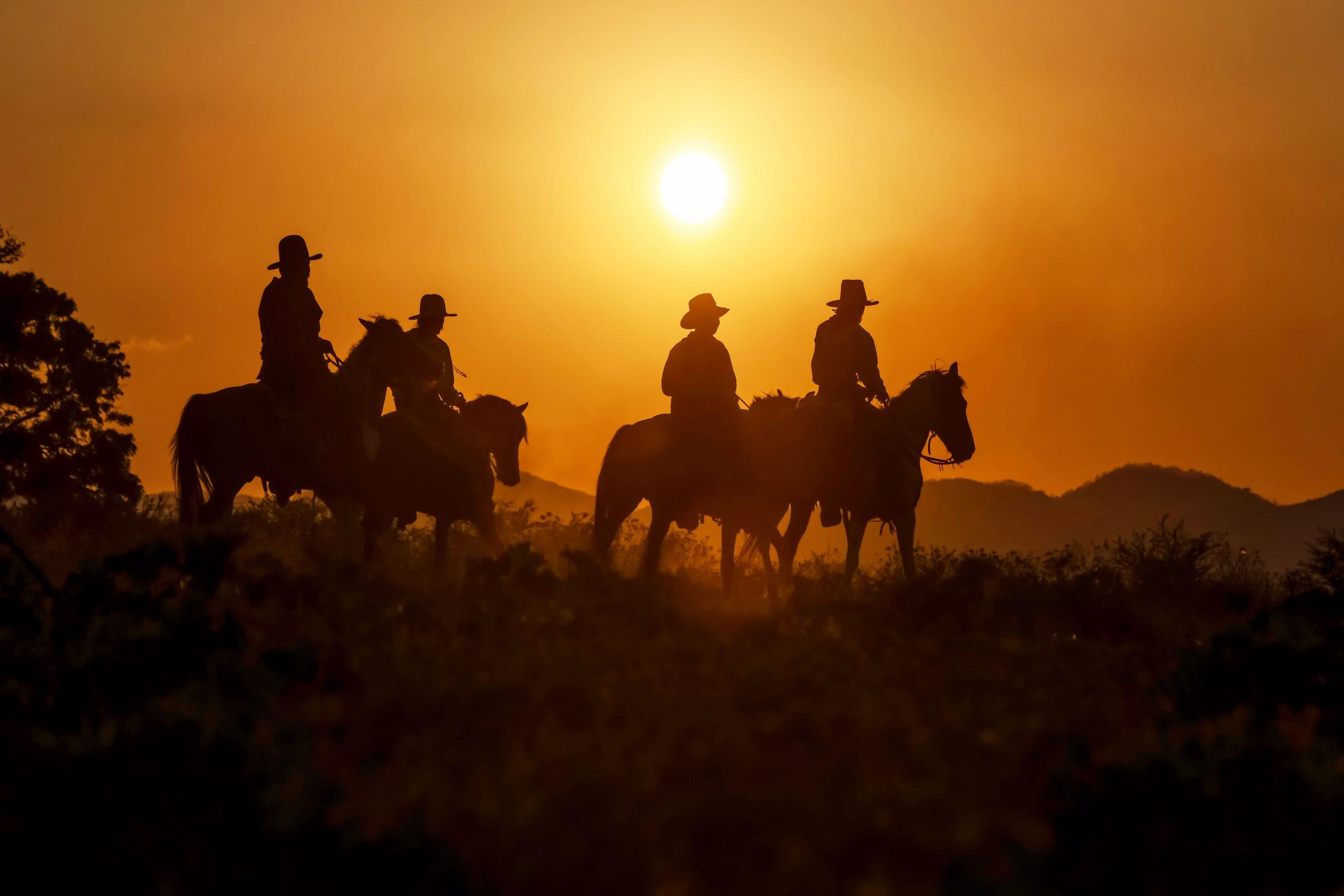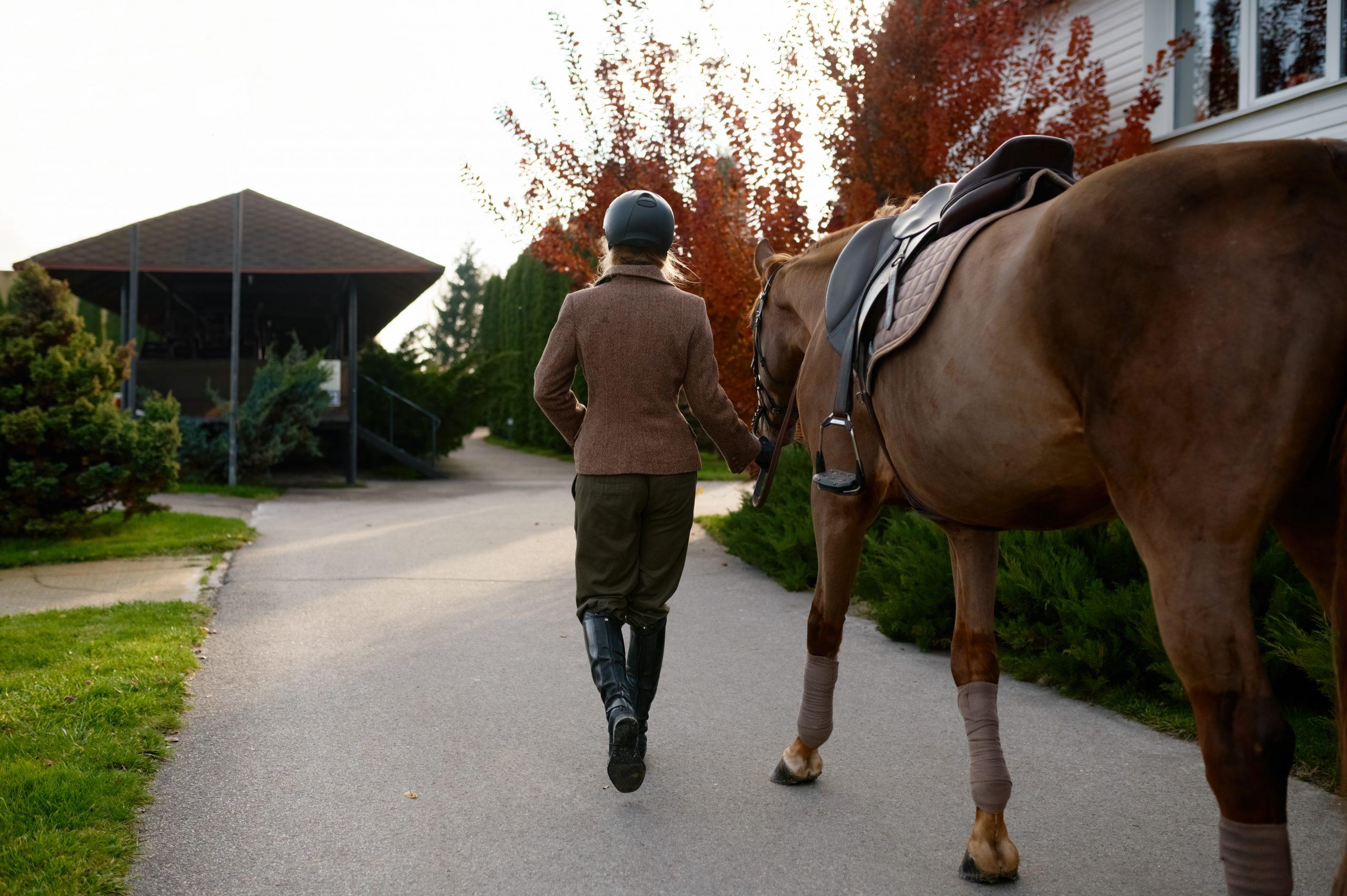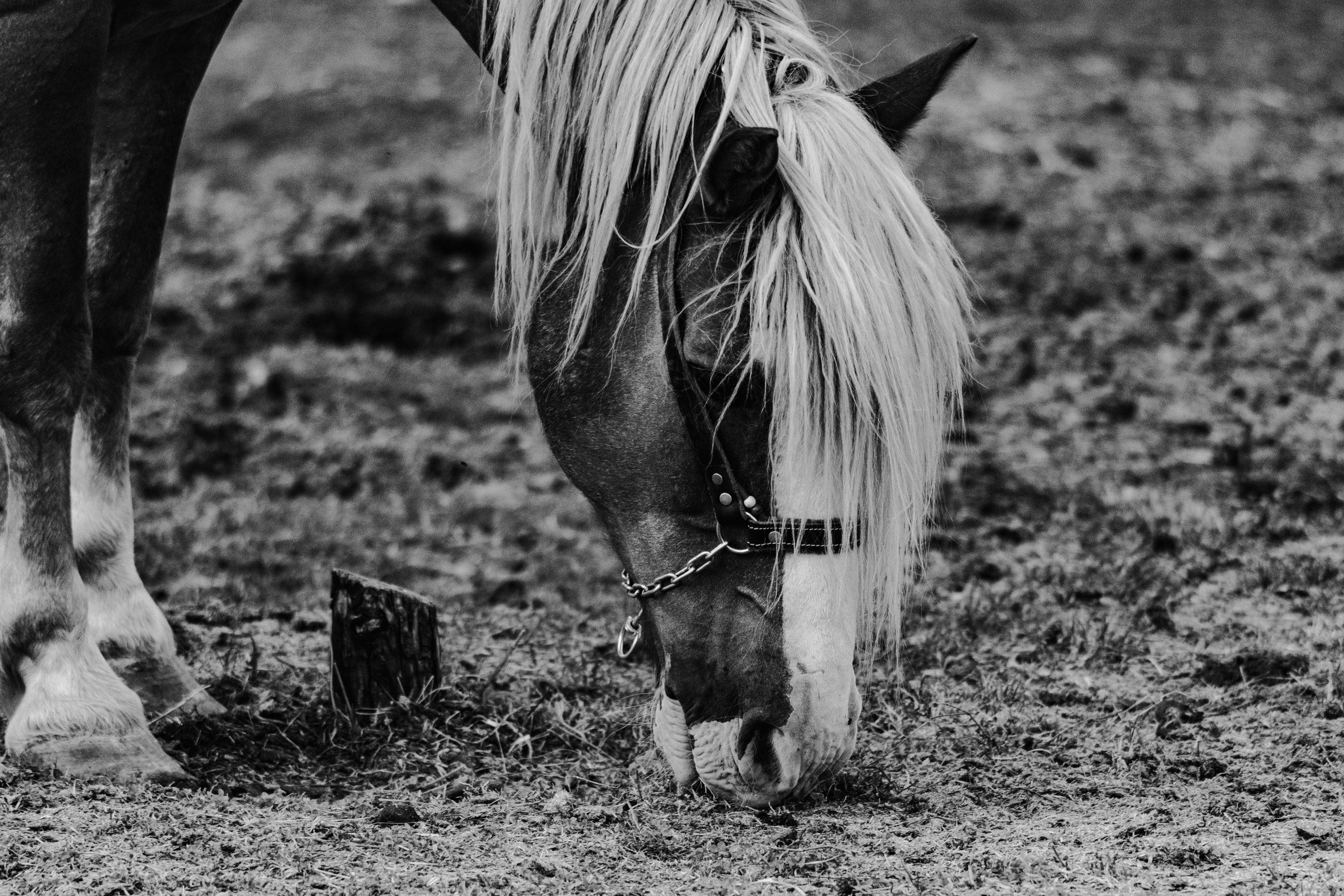What to Wear when Horseback Riding
To ensure a safe and comfortable horseback riding experience, it is essential to dress appropriately. Luckily, we’ve got you covered with this section on ‘What to Wear when Horseback Riding.’ The sub-sections ‘Importance of Appropriate Attire’ and ‘Safety Considerations’ will provide you with all the tricks and tips for dressing properly to stay safe and comfortable while horseback riding.
Importance of Appropriate Attire
The suitable apparel for horseback riding cannot be overstated. Suitable clothing enables resilience and adequate mobility for the rider during the riding activities. While riding, wearing jeans, a shirt with well-fitting boots is beneficial. When the horse rises, slim-fitting pants and tall boots with a heel are essential to prevent foot slipping through stirrups.
Attire plays a vital role in enhancing safety while horseback riding. Wearing proper gear keeps you and your equine partner safe from injury and damage. Always wear a helmet to shield your head from falls or injuries that may arise during training or even recreational horseback riding.
One important factor that riders often overlook in dressing up for horseback riding is choosing the appropriate base layer. The padding added by a suitable undershirt or protective vest provides additional cushioning and protection while also controlling moisture on sweatier days.
A true story is told of how King Henry VIII rode his horses, ones trained especially to his taste, attended by an assorted group of cavalrymen dressed in ceremonial outfits with bright colors and delicate accessories that stood out proudly against their armor’s glint. Over time, equestrian attire became more functional and goal-oriented as it served military purposes, farm work assignments, sportsmanship or leisure activities like hunting trips.
Don’t underestimate the power of a good riding helmet – it’s the only thing standing between you and a potential lobotomy.
Safety Considerations
When participating in horseback riding, it is essential to keep your safety in mind. Wearing appropriate attire not only ensures comfort but also prevents injury. Choose a helmet that fits correctly and meets safety requirements. Wear sturdy footwear with a low heel and avoid loose or flowing clothing that could get tangled in equipment.
Additionally, consider investing in protective gear such as shoulder pads, chest protectors, and back braces. These items can offer additional protection while participating in more advanced riding activities. Lastly, always follow the rules of the stable or arena where you are riding and be aware of any hazards or potential dangers.
Remember that proper attire can make all the difference when it comes to enjoying your ride safely. Don’t risk injury by neglecting safety precautions. Invest in quality gear to ensure both comfort and protection while horseback riding.
Don’t miss out on enjoying this exciting activity due to preventable accidents caused by negligence. Follow these safety tips for horseback riding and take pleasure in exploring the world on horseback without fear of harm.
Ride off into the sunset (or the dressage ring) with confidence and style, thanks to these upper body clothing essentials for horseback riding.
Clothing for Upper Body
To choose the best clothing for horseback riding, enhance your comfort and mobility with tops that cater to these needs. Layers that suit the different weather conditions will support your rides through diverse seasons.
Tops that Enhance Comfort and Mobility
Upper garments that improve comfort and flexibility
Looking for clothing options to keep you comfortable and at ease while moving around? Check out these top garment choices that provide ultimate support and relaxed mobility, perfect for your active lifestyle.
- Sleeveless tops: Opt for sleeveless tops that are crafted using soft fabrics such as cotton or bamboo. These allow air circulation and minimize sweating, making them perfect for hot summer days.
- Breathable tees: Choose breathable tees with moisture-wicking technology to help regulate your body temperature, wick away sweat, and reduce chaffing during intense work out sessions.
- Loose-fitting shirts: Loose-fitting shirts made of lightweight fabric offer maximum comfort and movement without any restriction or discomfort.
Intricately designed clothing articles with added convenience will always be a game-changer when it comes to performance and endurance while maintaining a stylish look.
Studies show that the use of appropriate clothing material during physical activity plays a crucial role in reducing stress levels on our bodies(1).
(1) Source: Journal of textile science & engineering
Sometimes the only layer you really need is a good sense of humor, but these clothes will help too.
Layers for Different Weather Conditions
The way you dress your upper body can make all the difference in different weather conditions. Here are three layers to consider:
- Base Layer: Wear a breathable shirt that wicks away moisture during hot days or adds warmth during colder ones.
- Middle Layer: Choose an insulating jacket or sweater made of fleece, synthetic down, or wool to trap heat depending on the temperature.
- Outer Layer: Keep the wind and water out with an outer layer that is waterproof, windproof, and breathable. A shell jacket made of Gore-Tex can help you stay comfortable in different weather conditions.
To ensure your clothing serves its intended purpose, consider ventilation to prevent overheating and adjust layers as necessary. Remember, adding too much clothing can lead to sweating which could make you feel cold.
Pro Tip: Secret pockets will keep your essentials safe in different weather conditions without weighing you down.
I guess pants are just like relationships, some are too tight, some are too loose, and some are just right.
Clothing for Lower Body
To ensure your comfort and safety during horseback riding, it’s crucial to wear the appropriate clothing for your lower body. In order to address your concerns, this section ‘Clothing for Lower Body’ in ‘What To Wear Horseback Riding: Do’s, Don’ts’ provides you with solutions through its sub-sections – ‘Riding Pants – Materials and Styles’ and ‘Choosing the Right Footwear.’
Riding Pants – Materials and Styles
Riding pants, be it for horse riding or motorcycling purposes, have a wide range of materials and styles to choose from. There are options such as leather, denim, and synthetic fabrics that offer different levels of durability and comfort. The styles available range from tight-fitting breeches for equestrian sports to looser fitting jeans for casual rides. It’s important to choose the right pair of riding pants based on your specific needs.
It’s worthwhile considering some additional features beyond the materials and styles. Some riding pants come with added protection, such as reinforced knees and hips or heat-resistant fabric. Also, be mindful of the fit of your riding pants – they should fit snugly but still allow for a full range of motion.
Don’t miss out on finding the perfect pair of riding pants to meet your unique needs. Take into consideration all the options available in terms of materials, styles, and additional features before making a final decision.
Why settle for one pair of shoes when you can have a collection that covers everything from hiking to happy hour?
Choosing the Right Footwear
When it comes to selecting the appropriate lower body clothing, choosing suitable footwear is incredibly important. Different shoes serve different purposes and can have a significant impact on your comfort and well-being throughout the day.
Here are five key points to consider when picking out your next pair of shoes:
- Consider their purpose – Are they for work, exercise or everyday wear?
- Check for fit – Proper size and support are crucial for avoiding aches and pains.
- Mind the material – Choose breathable options in summer, insulated ones in winter.
- Think about style – Select shoes that match your wardrobe while also serving their intended function.
- Don’t forget cost – Price often correlates with quality, so don’t skimp if you’re planning to wear them frequently.
For additional benefit, pay attention to shoe brands that specialize in specific types of footwear. Athletic brands will likely provide better quality running shoes than general shoe manufacturers. Similarly, high-end dress shoe companies may offer more stylish dress shoes than budget-friendly department stores.
For maximum longevity, invest in shoe maintenance tools such as weather-proofing sprays and regular cleanings. Keeping your footwear clean and cared for will ultimately lengthen its lifespan.
As a final suggestion, consider rotating between several pairs of shoes throughout the week. Not only will it increase their longevity by providing rest between uses but also help avoid unwanted foot odor from prolonged use of a single pair.
Remember that choosing the right footwear involves considering various factors such as purpose, fit, material, style and price. With proper consideration and maintenance, selecting the best shoes for any occasion will ensure both comfort and confidence in daily life. When it comes to protective gear for your lower body, always remember: better safe than sorry, better full pants than full casts.
Protective Gear
To ensure that you have a safe horseback riding experience, it’s important to make sure you’re wearing the right protective gear. In this section about “Protective Gear” with a focus on “Helmets – Importance and Proper Fitting” and “Body Protectors”, we’ll discuss the importance of these two pieces of gear and how they can protect you in case of an accident.
Helmets – Importance and Proper Fitting
Protective gear is crucial for safety in all types of sports. One important aspect is head protection, and helmets are essential for players to avoid severe head injuries. Proper fitting of helmets is equally important as wearing an ill-fitting helmet could lead to serious head injuries or impairments.
Helmets must be worn securely, ensuring that the chin-strap is fastened firmly and the helmet fits comfortably on the player’s head. The helmet should cover the forehead and ears without blocking vision or hindering hearing ability. A helmet built with durable materials minimizes absorption of direct impacts experienced during gameplay.
Furthermore, as concussions occur more frequently than anticipated, advanced helmets with impact sensors provide an extra layer of protection by alerting team medical personnel when a considerable hit has transpired.
Pro Tip: Investing in a good quality helmet will always trump buying lower-quality alternatives due to higher levels of durability and safety benefits offered.
If body armor is like a hug from a bullet, body protectors are like a forcefield against the world’s worst cooties.
Body Protectors
The equipment that is intended to protect the body from harm and injuries in various situations is an essential part of personal safety. It can help prevent injury and keep an individual safe during various activities.
- 1. Body Protectors are commonly worn by individuals who engage in equestrian sports, such as horseback riding or polo. They’re designed to provide a barrier between the rider’s body and any impact.
- 2. when working with power tools or machinery, Body Protectors can be used to reduce the risk of cuts, punctures, and lacerations.
- Last but not least, athletic gear such as helmets and padding offer protection for athletes involved in contact sports like football or hockey.
Body Protectors also come in various shapes, sizes, and protective materials depending on their purpose. Some Body Protectors are designed to protect from blunt force trauma while others can shield against sharp objects.
Some historical evidence suggests that ancient Roman gladiators used armor made of metal during fights to protect themselves from harm. This practice continued until today’s modern-day body armor widely utilized by law enforcement officers and military personnel worldwide. Who needs a fancy watch when you can accessorize with a hazmat suit?
Accessories and Extras
To perfect your horseback riding experience with maximum comfort and safety, explore the accessories and extras section of the article titled ‘What To Wear Horseback Riding: Do’s, Don’ts’. The sub-sections namely Gloves – Purpose and Materials and Sunglasses and Sun Hats allocate to improve your grip, protect you from sunburn, and prevent dust or bugs from getting into your eyes while horseback riding.
Gloves – Purpose and Materials
Gloves play a vital role in various settings and serve different purposes. These hand coverings come in diverse materials suitable for varying needs. The fabric ranges from cotton, leather, plastic, latex to heavy-duty synthetic materials like Kevlar.
Gloves – Function and Manufacturing Materials: They are necessary for activities that require protection against heat, chemicals, cold weather or cuts. The quality of material depends on the kind of activity involved and the level of protection required. Latex and nitrile gloves provide barrier protection in healthcare settings while heavyweight material gloves shield workers from cuts and stitches.
In selecting gloves for use, considerations like thickness, weight, length, hygiene among others apply. Additionally, it’s important to ensure they fit perfectly and offer ease of movement to enhance their functionality.
A friend shared how inappropriate glove choice affected her job performance; having to switch gloves frequently due to discomfort with the fit resulted in time wastage. It is essential to take into account all factors before choosing gloves suitable for a particular activity.
Protect your eyes from the sun and your head from bad hair days with sunglasses and sun hats – fashion accessories that actually serve a purpose.
Sunglasses and Sun Hats
Protective Gear for Sun Exposure
Shielding oneself from the harmful rays of the sun is crucial, especially when spending time outdoors. Certain accessories and extras come in handy, such as those for covering one’s eyes and face.
- Sunglasses – Effective in reducing glare and providing UV protection.
- Sun Hats – Wide-brimmed hats offer protection to the head, face and neck from direct sunlight.
- Scarfs – Thick fabric scarfs protect the neck and chest area from direct UV exposure.
- Sun Protective Clothing – Clothing made with fabrics that provide maximum Ultraviolet Protection Factor (UPF) are ideal.
It is essential to choose gear that provides excellent protection against harsh sunlight to avoid any skin damage-related issues or conditions.
Pro Tip: Invest in accessories made with high-grade materials that provide maximum sun protection whilst also keeping you cool during hot summer days. Skip the extra accessories and save for a rainy day – or a designer handbag, whichever comes first.
Things to Avoid
To avoid any unwanted risks during horseback riding with the wrong attire, you should be careful about Clothing that may Restrict Movement and Items that Make Noise or Distract the Horse. In order to have a smooth, calm and safe riding experience, you need to follow proper guidelines and steer clear of any items, which can serve as a potential threat.
Clothing that may Restrict Movement
Clothing that may Hinder Mobility
Certain clothing can restrict an individual’s movement, leading to discomfort and decreased productivity. Avoid wearing tight or constricting clothes as they limit range of motion and blood circulation. Loose clothing made of non-breathable fabrics like denim can also impede movement.
- Avoid garments with tight cuffs, collars and waistbands that cling to the body
- High heels and shoes without proper support affect posture and gait
- Excessive layers of clothes make it difficult to move your limbs smoothly
- Tight belts, corsets, and compression undergarments interfere with the breathing process
- Pants or skirts with a long inseam that require high steps when walking
Garments that are too large or have excessive embellishments can create additional obstacles while moving around. Being mindful of clothing choices may improve overall productivity in daily activities.
Research shows that restrictive clothing can have negative effects on health, such as restricting blood flow and nerve function.
Why give your horse a headache when you can just give yourself one by using noisy gear?
Items that Make Noise or Distract the Horse
As equestrian enthusiasts, it’s necessary to understand that horses are easily distracted creatures – therefore, paying attention to the things around them while riding. Here are some factors that could divert the horse’s focus:
- Shiny Objects: Anything metallic or reflecting the sunlight can catch the horse’s attention and make them lose sight of what they’re supposed to focus on.
- Loud Noises: Sudden loud sounds like honking of a horn, fireworks, revving of engines can likewise lead to disturbance.
- Moving Objects: Moving things such as bicycles, dogs running around or construction equipment can distract your horse.
- New Environments: Horses are creatures of habit and don’t feel comfortable in new environments. A new surrounding may initially attract their attention.
It’s important that riders pay attention to their surroundings even before mounting a horse. Additionally, ensure all gear or tack used is properly adjusted so it will not cause any noise which could distract your mount during a ride. By being mindful and aware of both rider and horse surroundings – this can improve safety for both parties. Don’t miss out on experiencing a great ride by taking care in every detail. Remember, avoiding these things may not make you happier, but it will definitely make your therapist happier.
Conclusion
After reading and understanding what to wear horseback riding, it is clear that the right clothing for this activity can vary depending on the venue, weather conditions and type of riding. One must always prioritize safety, comfort, functionality and protection. The clothing should be well-fitted, made of breathable materials and designed specifically for equestrian use. Wearing appropriate footwear is essential to avoid slipping or getting dragged in case of an emergency. Moreover, one must ensure all shirts are tucked in to prevent them from getting snagged while riding.
It is vital to respect each establishment’s policies regarding proper attire when horseback riding and adhere to them closely. Always consult with professionals beforehand if you have any queries about what to wear or not wear.
A useful tip for beginners would be packing a backup outfit in case your initial choice gets too dirty or uncomfortable during the ride.
A friend once shared their experience of going horseback riding without wearing proper gear as they considered it unnecessary. They ended up losing grip of the reins while trying to take a picture and had a bad fall resulting in minor injuries – proving that following these guidelines could save someone from unfortunate accidents.

